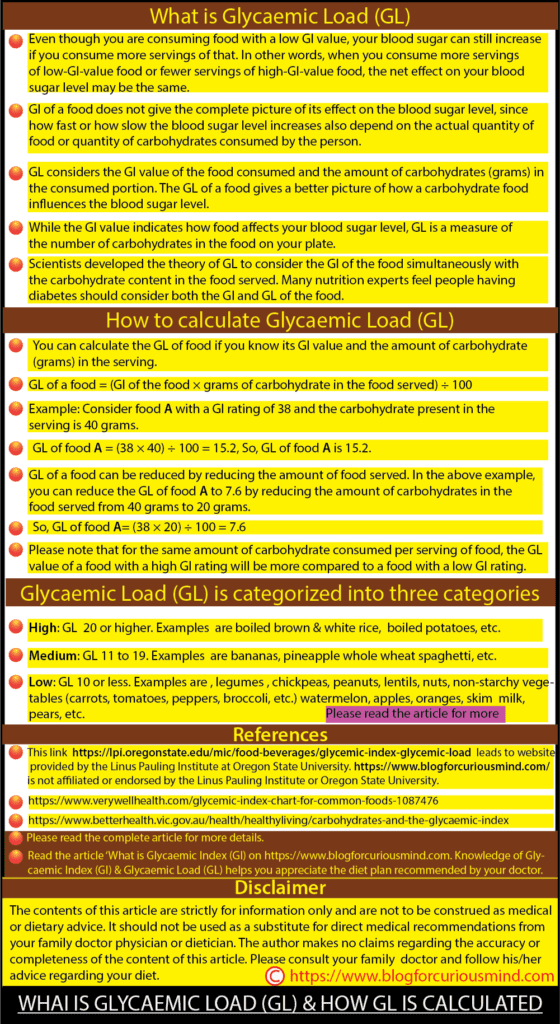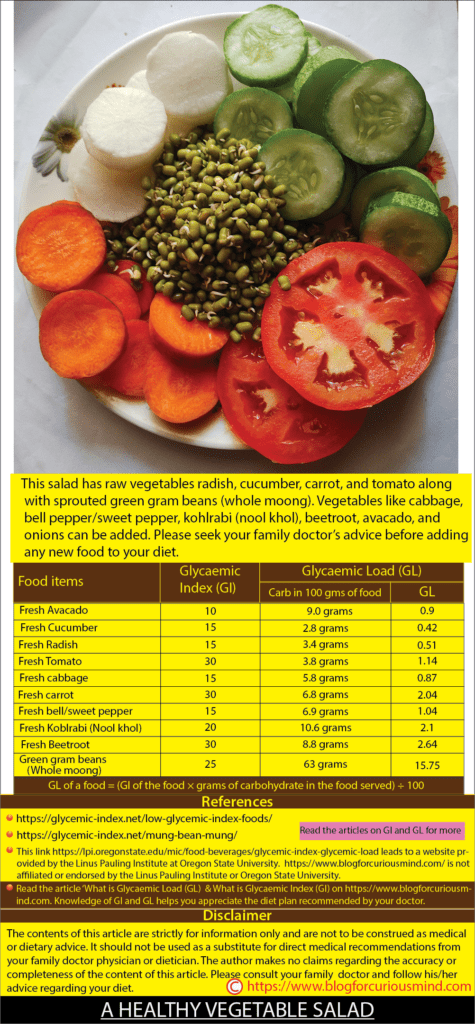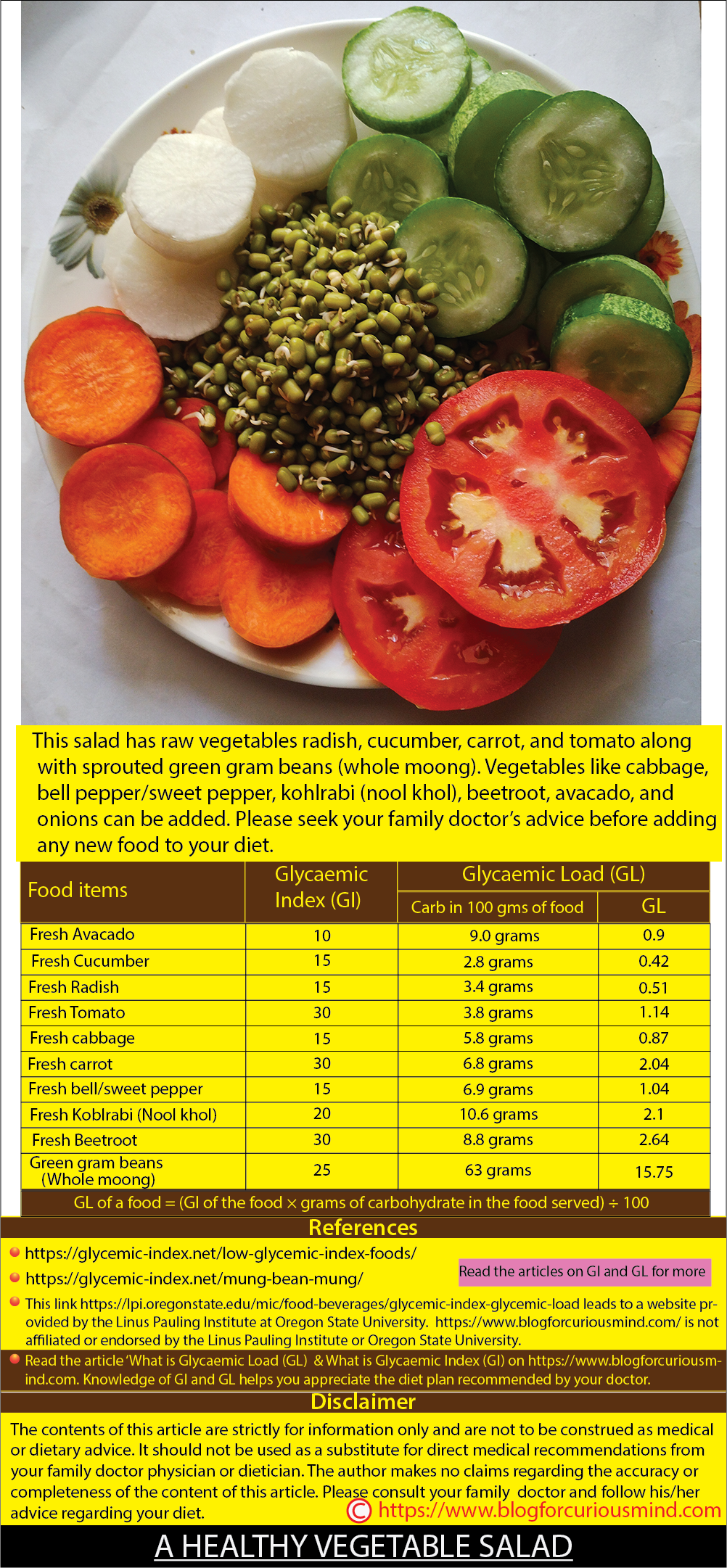Introduction
You may know that foods containing carbohydrates have an influence on blood sugar levels. But, many of us may not know how foods containing carbohydrates are graded based on their intensity of influence on blood sugar levels.
The Glycaemic Index (GI) and Glycaemic load (GL) are the techniques for qualifying how foods containing carbohydrates may impact our blood sugar levels.
The Glycaemic Index ranks carbohydrate foods based on how quick or slow they raise the blood sugar level. The Glycaemic Load ranks the carbohydrate foods considering their Glycaemic Index and actual carbohydrate in the portion.
A knowledge of GI and GL may help you when discussing your diet plan with your family doctor and understanding his/her advice, based on your medical reports.
The researchers developed GI and GL to ascertain the foods that help diabetic people keep their blood sugar levels under control; however, the concept of GI and GL may be useful for non-diabetic people for diet planning and managing blood sugar levels.
This article explains about Glycaemic Load. Read the article What is Glycaemic Index (GI) to know more about GI and how it is calculated.
What is Glycaemic Load (GL)
Even though you are consuming food with a low GI index, your blood sugar can still increase if you consume more servings of that. In other words, when you consume more servings of low-GI-index food or fewer servings of high-GI-index food, the net effect on your blood sugar may be the same.
GI of a food does not give the complete picture of its effect on the blood sugar level, since how fast or how slow the blood sugar level increases depends on the actual quantity of food or quantity of carbohydrates consumed by the person.
This is where the Glycaemic Load comes into the picture. Glycaemic Load (GL) considers the GI score of the food consumed as well as the amount of carbohydrates in the consumed quantity.
Lentils and pasta have a low GI score, but they can still increase your blood sugar level if you consume large portions of them. The Glycaemic Load of food gives a better picture of how the actual quantity of food (carbohydrate) influences the blood sugar level.
While the GI value indicates how food affects your blood sugar level, Glycemic Load (GL) is a measure of the number of carbohydrates in the food on your plate.
Scientists developed the theory of Glycaemic Load (GL) to consider the Glycaemic Index (GI) of the food simultaneously with the carbohydrate content in the food served. Many nutrition experts feel people having diabetes should consider both the GI and GL of the food consumed by them since the quantity of carbohydrates consumed is equally important as the GI of the food. Many fruits have a high GI but a low GL.
Like GI, Glycaemic Load (GL) is categorized into three groups:
- High
- Medium
- Low
High
GL 20 or higher. Examples of high GL are cooked brown rice, cooked white rice, boiled potatoes, cornflakes, etc.
Medium
GL 11 to 19. Examples of medium GL are bananas, pineapple, whole wheat spaghetti, etc.
Low
GL 10 or less. Examples of low-GL foods are legumes, chickpeas, peanuts, lentils, nuts, non-starchy vegetables (carrots, tomatoes, peppers, broccoli, etc.), watermelon, apples, oranges, skim milk, pears, etc.
A food with a high GI value may not necessarily have a high GL value. Watermelon has a high GI value of 72, but due to its low carbohydrate content per serving (grams), it has a GL of 5.
How to calculate the Glycaemic Load (GL) of a single food

You can calculate the Glycaemic Load (GL) of food if you know its GI value and the amount of carbohydrate (grams) in the serving.
Glycaemic Load of a food = (GI of the food × grams of carbohydrate in the food served) ÷ 100
Example: Consider food ‘A’ with a GI value of 38 and the carbohydrate present in the serving is 40 grams.
GL of food ‘A’ = (38 × 40) ÷ 100 = 15.2
You can reduce the GL of the food by reducing the amount of food served. In the above example, you can reduce the GL of food ‘A’ to 7.6 by reducing the amount of carbohydrates in the food served from 40 grams to 20 grams.
So, GL of food ‘A’= (38 × 20) ÷ 100 = 7.6
Please note that for the same amount of carbohydrate consumed per serving of food, the GL value of a food with a high GI rating will be more compared to a food with a low GI rating.
Please refer the following website for more information on GI and GL.
This link leads to a website provided by the Linus Pauling Institute at Oregon State University. https://www.blogforcuriousmind.com/ is not affiliated or endorsed by the Linus Pauling Institute or Oregon State University.
Also, please go through the websites mentioned under reference (at the end of this article).
You may watch this, this, and this YouTube videos on GI and GL.

Conclusion
Experts say that eating high GI or high GL foods may be associated to the risk of adverse health conditions including Type 2 Diabetes. Reducing the intake of high GI or high GL foods may help people with Type 2 Diabetes to keep their blood sugar level under check. Please consult your family doctor and seek help to fix a diet good for you, based on the medical reports.
You may read the following articles
What is Glycaemic Index and how it is calculated
Caution
The contents of this article are strictly for information only and are not to be construed as medical or dietary advice. The content of this article should not be used as a substitute for direct medical recommendations from your family doctor physician or dietician. The author makes no claims regarding the accuracy or completeness of the content of this article. Please consult your family doctor and physician and follow his/her advice regarding the diet and food good for you.
References
https://www.verywellhealth.com/glycemic-index-chart-for-common-foods-1087476
https://www.betterhealth.vic.gov.au/health/healthyliving/carbohydrates-and-the-glycaemic-index

